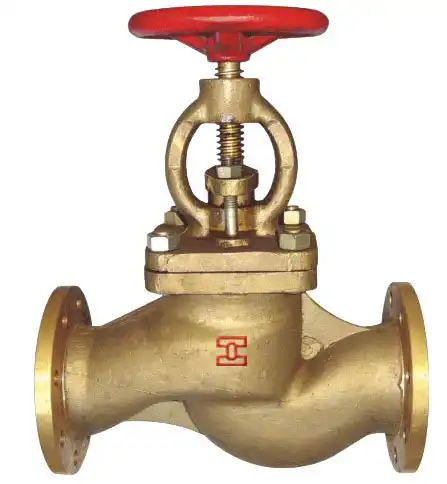|
Marine Valves: The Unsung Heroes of Oceanic EngineeringMarine valves are the unsung heroes of maritime engineering, silently yet crucially ensuring the safe and efficient operation of ships, offshore platforms, and underwater systems. These specialized valves are engineered to withstand the harshest marine environments—corrosive seawater, extreme pressures, and fluctuating temperatures—while reliably controlling the flow of fluids such as seawater, oil, gas, and chemicals. This article explores the critical role of marine valves, their design innovations, and their evolving importance in modern oceanic industries. 1. The Critical Role of Marine Valves Marine valves are indispensable components in naval architecture and offshore engineering. Their primary functions include: Flow Control: Regulating the start, stop, and direction of fluid flow in pipelines. Pressure Management: Ensuring systems like propulsion, cooling, and ballast operate within safe parameters. Safety: Preventing catastrophic failures through check valves, safety valves, and emergency shutdown mechanisms. Without these valves, ships would lack the ability to manage ballast for stability, cool engines, or transfer cargo safely. In offshore energy operations, subsea valves control the extraction and distribution of oil, gas, and renewable energy resources. 2. Types of Marine Valves and Their Applications Marine valves are categorized by design, function, and operational requirements:
By Design Ball Valves: Offer quick shut-off and minimal pressure drop, ideal for high-pressure systems. Butterfly Valves: Lightweight and compact, used for large-diameter pipelines in seawater cooling or fire-fighting systems. Gate Valves: Provide full bore flow with minimal resistance, often used in non-throttling applications. Check Valves: Prevent backflow in critical systems like fuel lines or hydraulic circuits. Safety Valves: Automatically release excess pressure to prevent explosions or equipment damage. By Application Seawater Valves: Found in engine cooling systems and ballast tanks, often made of corrosion-resistant materials like stainless steel. Cargo Valves: Regulate the transfer of hazardous or valuable cargo (e.g., crude oil, LNG) in tankers. Subsea Valves: Designed for deep-sea operations, such as oil well control or pipeline management at depths exceeding 3,000 meters. Isolation Valves: Used to isolate sections of a system during maintenance or emergencies. 3. Material Science and Design Innovations Marine valves must withstand relentless exposure to saltwater, UV radiation, and mechanical stress. Key materials include: Stainless Steel (e.g., 316L): Resists corrosion and is widely used in general marine applications. Duplex Stainless Steel (e.g., 2205): Combines strength with corrosion resistance for high-pressure offshore systems. Nickel Alloys (e.g., Monel, Inconel): Ideal for extreme environments, such as deep-sea hydrothermal vents. Composite Materials: Lightweight polymer coatings or ceramic seals reduce wear and maintenance needs. Modern designs prioritize modularity and automation: Smart Valves: Equipped with IoT sensors for real-time monitoring and predictive maintenance. Electric/Hydraulic Actuators: Enable remote operation in hazardous or inaccessible areas. Fail-Safe Mechanisms: Ensure valves remain operational even during power outages or system failures. 4. Applications in Emerging Industries Marine valves are increasingly critical in cutting-edge oceanic sectors: Offshore Energy Oil & Gas: Subsea valves manage production, injection, and emergency shutdowns in deepwater platforms. Renewable Energy: Used in tidal turbines and floating wind farms to regulate hydraulic systems. Maritime Transport Ballast Water Management: Valves control seawater intake to comply with environmental regulations (e.g., IMO’s Ballast Water Management Convention). LNG Tankers: Specialized cryogenic valves handle ultra-low-temperature liquefied natural gas. Defense and Exploration Submarines: High-pressure valves ensure safe ballast control and emergency surfacing. ROV Systems: Valves in remotely operated vehicles enable tool deployment and sample collection. 5. Market Growth and Future Trends The global marine valve market is projected to grow at a CAGR of 7.2% through 2030, driven by: Offshore Energy Expansion: Rising demand for deep-sea oil/gas exploration and offshore wind farms. Sustainable Materials: Adoption of eco-friendly alloys and coatings to reduce environmental impact. Digitalization: Integration of AI and IoT for predictive maintenance and energy efficiency. Regulatory compliance also plays a key role. Standards like ISO 13623 (marine equipment) and API 17D (subsea controls) ensure safety and interoperability across global industries. 6. Challenges and Opportunities Despite advancements, challenges persist: Corrosion Resistance: Developing materials to withstand increasingly corrosive environments. Deep-Sea Pressures: Designing valves for ultra-high pressures (e.g., 15,000 psi) in methane hydrate extraction. Cost Efficiency: Balancing durability with affordability for smaller vessels and emerging markets. Opportunities lie in cross-industry collaboration and R&D investment. For example, partnerships between valve manufacturers and offshore energy firms are driving innovations like self-healing coatings and autonomous valve systems. 7. Conclusion Marine valves are the silent backbone of oceanic engineering, enabling humanity to explore, exploit, and protect the seas. As industries push deeper into uncharted waters, these valves will continue to evolve—becoming smarter, stronger, and more sustainable. Their role in ensuring safety, efficiency, and environmental stewardship will only grow in importance as the world’s reliance on maritime resources expands. |

